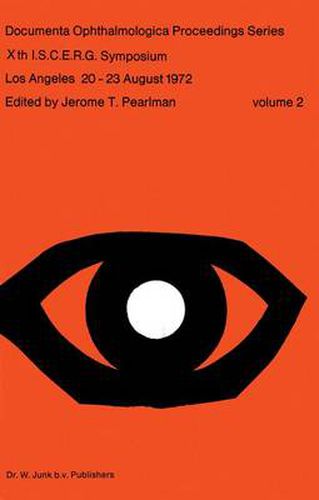Readings Newsletter
Become a Readings Member to make your shopping experience even easier.
Sign in or sign up for free!
You’re not far away from qualifying for FREE standard shipping within Australia
You’ve qualified for FREE standard shipping within Australia
The cart is loading…






Two groups of volunteers having no eye disease were examined electro-oculo- graphically twice at ten minute intervals. One group smoked in the break, one didn’t. In the non-smoking group there are a number of significant correlations between the tested parameters in the dark-period and in the light-period, which could not be found to the same degree in the smoking group. The fact that there were differences between the two groups-even though not interpretable systematicaIly-suggests, that smoking influences physiological processes in the EOG. In the second period of the test, a parallelism in the course of EOG and EEG was observed, the EEG-changes, however, are interpreted more psychologically than pharmacologicaIly. REFERENCES HAASE, E. & MUELLER, W. Messbare Beeinflussung des EOG durch Zigarettenrauchen1 Klin. Mbl. Augenhk. Bd. 158:677 (1971). HAGER, H. Thrombangiitis obliterans und Auge. Klin. Mbl. Augenhk. Bd. 114:238 (1949). HAUSER, H., SCHWARZE, B. E., ROTH, G. & BICKFORD, R. G. Electroencephalographic changes related to smoking. EEG clin. Neurophysiol. Vol. 10:576P (1958). HEIMBOCK. Wien. klin. Wschr. Bd. 73:529 (1961). HOLLWICH, F., JUNEMANN, G. & DAMASKE, E. Auge. In: Nikotin. Edited by Schievelbein. H. Georg Thieme Verlag, Stuttgart (1968). HOMER, L. D. & KOLDER, H. Mathematical model of oscillations in human corneo-retinal potential. Pflugers Arch. ges. Physiol. 287 :197 (1966). KOLDER H. Spontane und experimentelle Anderungen des Bestandpotentials des menschlichen Auges. P{lugerrs Arch. ges. Physiol. 268:258 (1959). KOLDER, H. E. & HOCHGESAND, P. Empirical Model of Electro-Oculogram. Doc. Ophtha!. (1972) in press.
$9.00 standard shipping within Australia
FREE standard shipping within Australia for orders over $100.00
Express & International shipping calculated at checkout
Two groups of volunteers having no eye disease were examined electro-oculo- graphically twice at ten minute intervals. One group smoked in the break, one didn’t. In the non-smoking group there are a number of significant correlations between the tested parameters in the dark-period and in the light-period, which could not be found to the same degree in the smoking group. The fact that there were differences between the two groups-even though not interpretable systematicaIly-suggests, that smoking influences physiological processes in the EOG. In the second period of the test, a parallelism in the course of EOG and EEG was observed, the EEG-changes, however, are interpreted more psychologically than pharmacologicaIly. REFERENCES HAASE, E. & MUELLER, W. Messbare Beeinflussung des EOG durch Zigarettenrauchen1 Klin. Mbl. Augenhk. Bd. 158:677 (1971). HAGER, H. Thrombangiitis obliterans und Auge. Klin. Mbl. Augenhk. Bd. 114:238 (1949). HAUSER, H., SCHWARZE, B. E., ROTH, G. & BICKFORD, R. G. Electroencephalographic changes related to smoking. EEG clin. Neurophysiol. Vol. 10:576P (1958). HEIMBOCK. Wien. klin. Wschr. Bd. 73:529 (1961). HOLLWICH, F., JUNEMANN, G. & DAMASKE, E. Auge. In: Nikotin. Edited by Schievelbein. H. Georg Thieme Verlag, Stuttgart (1968). HOMER, L. D. & KOLDER, H. Mathematical model of oscillations in human corneo-retinal potential. Pflugers Arch. ges. Physiol. 287 :197 (1966). KOLDER H. Spontane und experimentelle Anderungen des Bestandpotentials des menschlichen Auges. P{lugerrs Arch. ges. Physiol. 268:258 (1959). KOLDER, H. E. & HOCHGESAND, P. Empirical Model of Electro-Oculogram. Doc. Ophtha!. (1972) in press.